Hide a fighter: principles and issues of camouflage
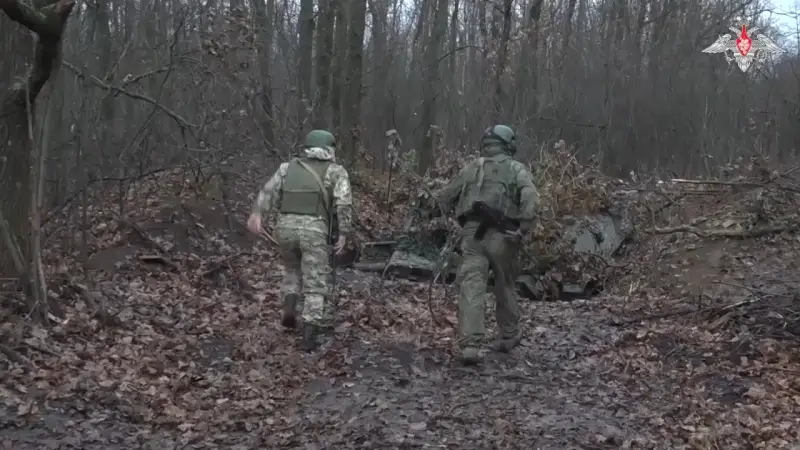
Soldiers participating in the Special Operations in camouflage uniforms and a camouflaged armored vehicle
The most important place in military affairs is occupied by camouflage - a set of various kinds of measures to hide one’s personnel, weapons and positions from the enemy. By hiding your fighters from reconnaissance means, you can gain certain advantages and predetermine the outcome of the operation. To protect military personnel from unnecessary attention and corresponding risks, various means, devices and methods can be used, and camouflage issues cover several different areas at once.
Visibility problem
Fighter with weapons, who is in position or leading active actions, can be detected in different ways. If it poses a potential danger, then detection is followed by fire and defeat. Masking is required to avoid these outcomes and the associated risks of a different magnitude.
For obvious reasons, the visual detection method is most widely used - with the naked eye or using optics or optical-electronic devices, day and night. A person can stand out against the background of the area by silhouette, movements, color, etc. Detection using thermal imaging equipment that receives infrared radiation from the body works in a similar way. In most situations, a person will differ from the background and give himself away in other ways.
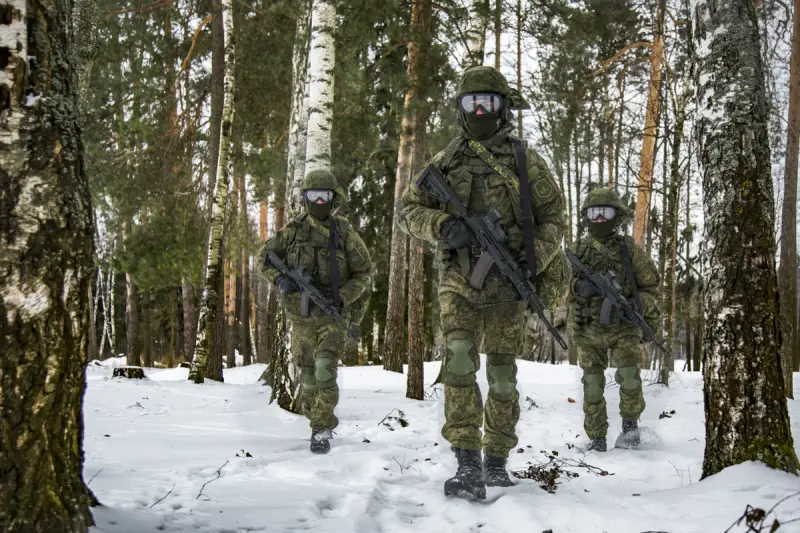
Military personnel in "Ratnik" equipment against a forest background
Less common, but also used is the principle of radar. There are a number of special radars designed to monitor ground conditions and search for a wide range of targets, ranging from humans. In the absence of any kind of interference, such a locator can detect a walking or standing person at distances of kilometers.
The acoustic search principle can be used. Without taking special measures, a person creates some noise and vibration when walking. Conversations, certain actions, poorly secured equipment, working devices, etc. may increase overall noise. In addition, the source of unmasking sounds in some situations may be frightened animals and other natural factors.
All these problems are well known to the military and receive one answer or another. Various means and methods aimed at reducing visibility are widely known and widespread. Using individual tools or combinations of them, you can reduce visibility or prevent detection altogether.
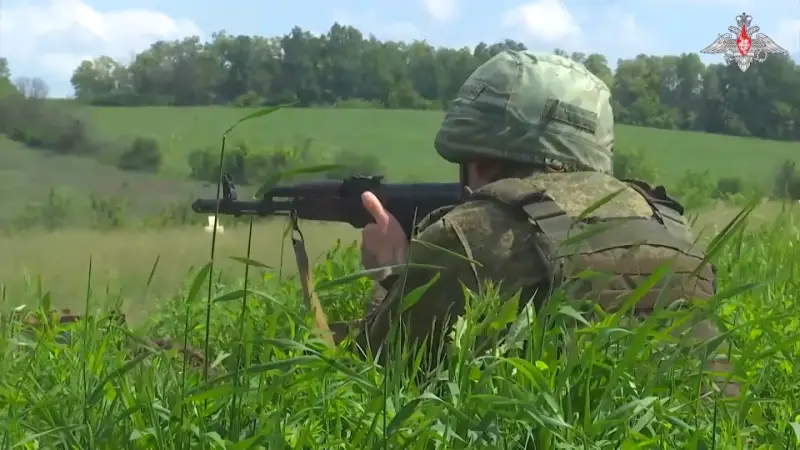
Visual counteraction
For obvious reasons, countermeasures to visual detection are the most common and widely used. They are used in the field of uniforms, painting and additional equipment for weapons and equipment, as well as in the arrangement of positions or the construction of various objects. In all cases, the same set of general principles apply to reduce the likelihood of detection.
The basic principle of visual camouflage is to eliminate the contrast between the hidden object and the surrounding environment. First of all, this effect is achieved through color - camouflage coloring, merging with the terrain, can dramatically reduce the visibility of the object. Both the probability of its detection and the distance of confident recognition deteriorate. To enhance the effect of camouflage, environmental elements can and should be used - branches, foliage, etc.
It is also necessary to get rid of the silhouette characteristic of the hidden object. For this, camouflage patterns of irregularly shaped multi-colored spots, special suits with fringes, etc. are used. A disrupted silhouette combined with camouflage colors gives the desired effect.
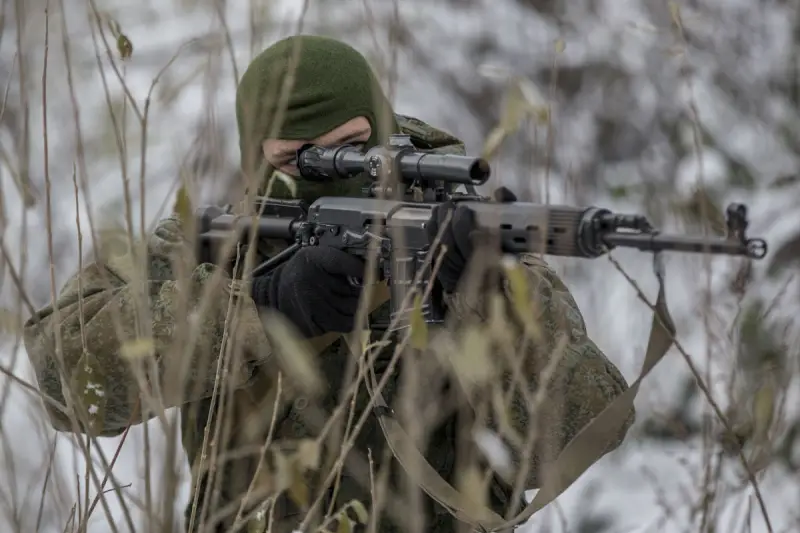
Using vegetation as cover is one of the simplest methods of camouflage.
Not so obvious, but important and necessary is getting rid of potentially unmasking elements. Various metal parts without special coating, weapons, optics, etc. may produce glare and attract unnecessary attention.
These principles are used to create fighters’ equipment – uniforms and various equipment. This is most clearly manifested in the development of various camouflage colors. Certain shades and schemes are proposed and implemented, both universal and for a specific type of terrain. In recent years, the idea of additional camouflage of personal weapons has become widespread. It receives a protective paint with a matte finish and is equipped with accessories that eliminate unnecessary glare.
In the context of camouflage, not only the soldier’s equipment is of great importance, but also his actions. In order to avoid unnecessary attention from the enemy and negative consequences, it is necessary to use natural shelters, avoid open spaces, move secretly, etc. All this significantly reduces risks and increases the chances of successfully completing a combat mission.
Thermal Imaging Threat
Protection from thermal imaging surveillance equipment is to some extent similar to visual camouflage, but has its own specifics and requires other means. At the same time, protection against surveillance in the visible and thermal parts of the spectrum can and should be used together - in uniforms and equipment, equipment for equipment, etc.
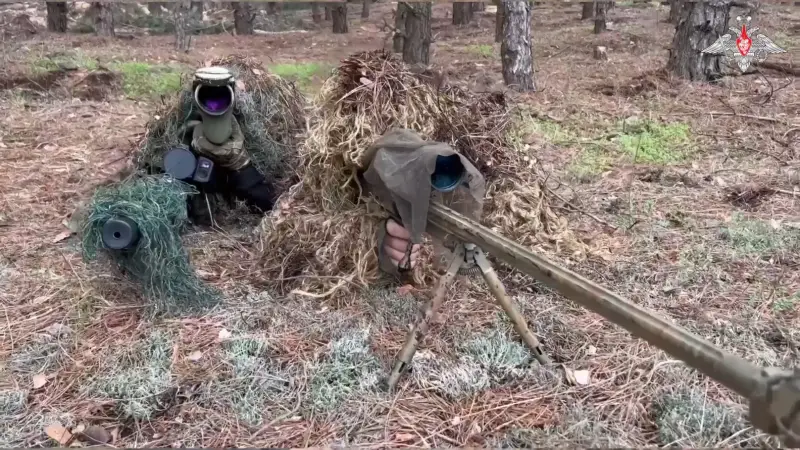
Snipers in camouflage suits solve a fire mission as part of a Special Operation
To protect a soldier from a thermal imager, products with two characteristic properties are needed. The first is to isolate heat from the body and prevent it from escaping to the outside to avoid detection by a thermal imager. At the same time, the outer layer of the protective equipment must accept the ambient temperature and not stand out against the background of the area. Conventional uniforms do not meet these requirements. It does not cut off heat, and some materials even “glow” in the infrared range.
It is proposed to solve such problems using multilayer systems made of different materials that have the necessary properties. In our country and abroad, various options for such camouflage are already offered, suitable for use in equipment. It is expected that such camouflage means will appear in armies, incl. in the Russian armed forces.
Anti-radar
Modern specialized ground reconnaissance radars can detect people at a distance of several kilometers. Such problems are solved through the correct selection of operating frequencies and data processing algorithms. However, these products face objective limitations and problems that may cause them to miss the target of a moving person. In addition, passive or active counteraction to locators is possible.
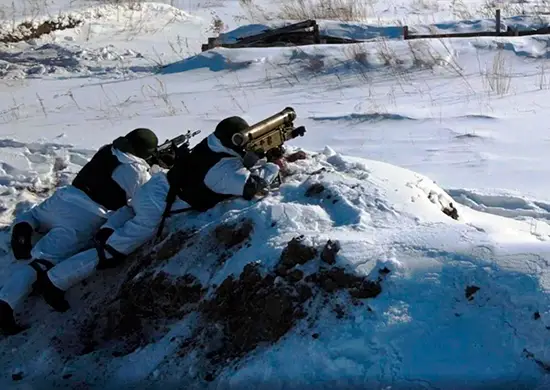
The crew of the ATGM competently uses camouflage and terrain features
Such radars scan the space directly above the ground, and uneven terrain, as well as various “extra” objects on the surface or at a low altitude, fall into the viewing area. Uneven terrain or other dense objects create dead zones that can be used for covert movement. Other objects create a high load on the locator and its computing facilities and make it difficult to solve the main problem.
Specific “stealth technologies” for countering ground reconnaissance radars suitable for use by personnel are not yet available. However, proper use of terrain features, natural shelters and interference can, at a minimum, complicate the work of the locator and its calculations. In addition, passive and active jamming is an effective means of counteraction - but in this case, disguised fighters will give away their presence.
Sound discipline
In various situations, the acoustic picture matters, and the most serious consequences are possible. The noise produced is reduced in a variety of ways, both by optimizing equipment and by using the appropriate skills of the fighters. Thus, the ability of personnel to walk and move quietly and carefully, without touching potential sources of noise, is of great importance.
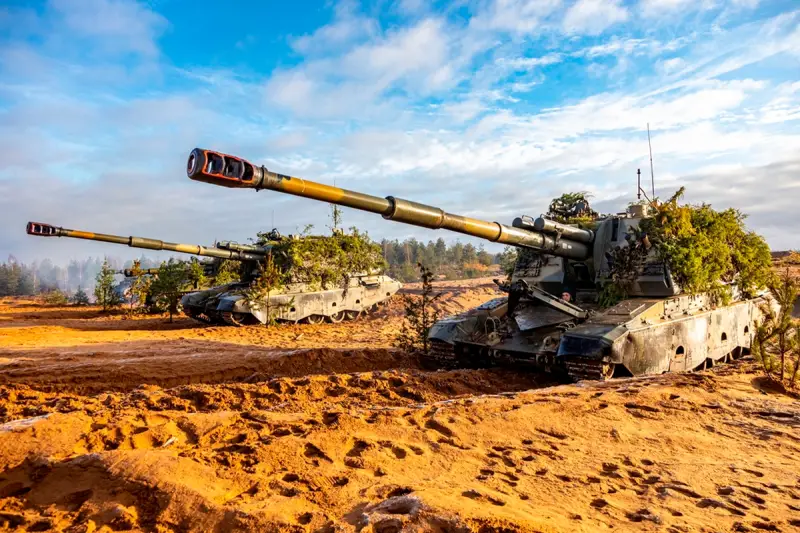
Self-propelled guns "Msta-S", disguised as vegetation
Noise reduction largely depends on the design and materials of the equipment. The textiles used should not rustle, metal parts should not ring, and items of equipment should not dangle or create other noise. In this case, not only the equipment itself matters, but also how it is adjusted by a specific fighter to his characteristics and needs.
Discovery race
Surveillance and detection tools are actively developing, and modern technologies contribute to the continuation of this process with new and interesting results. On the other hand, camouflage means are also being improved at the same time. New principles are being developed, new methods are being introduced and promising ideas are being proposed. Anti-surveillance capabilities are being implemented in a variety of areas, with infantry operating on the battlefield being the first to receive them.
There is no clear winner in this “arms race”. The balance is constantly changing, and each new development affects it. In addition, the effectiveness of camouflage depends on the actions of those who use it. Proper use, taking into account all available factors, will ensure the secret completion of assigned tasks with minimal risks.
Information